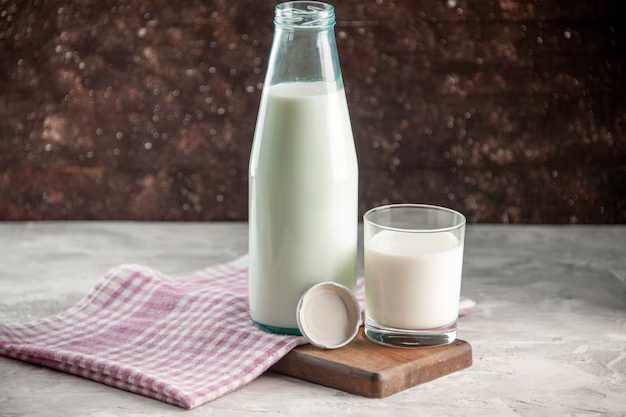Understanding the Shelf Life of Raw Milk in Your Refrigerator
If there's one natural and nutritious drink that has captivated generations, it's raw milk. Known for its rich taste and health benefits, raw milk is a staple for many households seeking unprocessed foods. But with its natural state comes an important question: How long does raw milk actually last in your refrigerator? Understanding the answer can help you enjoy its full benefits without any waste or health risks. Let's dive into the fascinating world of raw milk storage and safety.
🥛 What is Raw Milk?
Before we discuss its shelf life, it’s essential to understand what raw milk is. Raw milk is milk from cows, goats, sheep, or other animals that has not been pasteurized to kill harmful bacteria. Loved for its fresher taste and nutritional profile, raw milk has its fans who appreciate its probiotic-rich content.
Is Raw Milk Safe?
The consumption of raw milk has been debated among experts. While its supporters emphasize its natural properties and health benefits, it carries a higher risk of containing harmful bacteria compared to pasteurized milk. Opinions may vary, but raw milk lovers often turn to reputable farms with stringent safety practices to mitigate these risks.
How Long Does Raw Milk Last?
Understanding how long raw milk lasts is essential to making the most of your purchase without compromising safety.
Average Shelf Life
While raw milk doesn’t come with a fixed expiration date like its pasteurized counterpart, it can typically last anywhere from 7 to 10 days when stored in optimal conditions. This duration can vary based on several factors, including:
- Storage temperature: Maintaining a consistent cold environment is crucial.
- Milk handling: From farm to fridge, gentle handling can preserve its quality.
- Container type: Airtight and clean containers can extend its freshness.
Factors Influencing Shelf Life
Refrigerator Temperature: Keep your fridge below 40°F (approximately 4°C) to slow down the growth of spoilage bacteria.
Cleanliness: Use thoroughly cleaned and sanitized bottles to prevent contamination.
Time from milking to storage: Freshly harvested raw milk will last longer if swiftly cooled and properly stored.
Light Exposure: Always store in opaque containers to reduce light degradation.
Diagnosing Spoiled Raw Milk
Learning to recognize when raw milk turns is a vital skill for any user. Some signs of spoilage include:
- Sour smell: A strong, unpleasant odor is a clear indicator.
- Curdling: Separation into thick and watery layers.
- Off-taste: A sharp, unpleasant flavor not typical of fresh raw milk.
Safe Storage Practices
To optimize the shelf life and clarify the mystery of storing raw milk, consider these best practices.
Optimal Storage Containers
Choosing the right container aids in extending the milk’s lifecycle. Glass containers are preferred due to their non-reactive nature, but sturdy food-grade plastic can also work if it is BPA-free and well-sealed.
Storage Location in Fridge
Place milk in the coldest part of the fridge, typically in the back, to ensure consistent cooling, and always away from the door where temperature fluctuations occur.
Extending Raw Milk’s Lifespan — Is It Possible?
Yes! Employing a few strategies can slightly stretch that window of freshness.
Freezing Raw Milk
If you anticipate not consuming milk within its optimal timeframe, freezing can extend its life. Pour milk into a plastic container, leaving space for expansion, and freeze. Frozen raw milk maintains safety for up to 3 months. Remember to thaw in the fridge and shake well before consuming, as it can separate during freezing.
Creative Uses for Aging Milk
Should your milk be approaching the end of its freshness, consider these culinary applications:
- Baking: Use it in bread, pancakes, or muffins where flavor change is less noticeable.
- Fermented Products: Transform it into yogurt or cheese, which also enhances its shelf life.
The Pros and Cons of Raw Milk
Benefits
- Nutritional Value: Rich in vitamins, enzymes, and amino acids.
- Taste: Many prefer its richer, creamier flavor.
- Probiotics: Naturally occurring beneficial bacteria.
Drawbacks
- Safety Concerns: Higher risk of bacteria like E. coli or Salmonella.
- Shorter Shelf Life: More delicate due to no pasteurization.
- Legal Restrictions: Banned or regulated in some regions.
🧠 Key Takeaways
Here’s a quick glance at steps to enjoy raw milk safely and wisely:
- 🕒 Freshness First: Aim to consume within a week for optimal taste and safety.
- ❄️ Temperature Control: Store consistently cold and in well-sealed containers.
- 👃 Use Your Senses: Trust smell and taste to identify spoilage.
- 🧊 Freeze: Consider freezing if you can't consume it promptly.
- 🔄 Versatility: When freshness is fading, pivot to baking or fermentation.
Concluding Thoughts
Understanding how to store raw milk properly empowers you to enjoy its rich flavor and nutritional benefits safely. Whether you're passionate about raw milk for its flavor or potential health perks, maintaining optimal storage practices ensures each drop is enjoyed to its fullest potential. As you navigate your raw milk journey, always prioritize freshness and cleanliness to make the most of this natural, nutrient-rich beverage.
Remember, while enjoying raw milk, being informed and cautious ensures you savor all its advantages with peace of mind. 🍶
